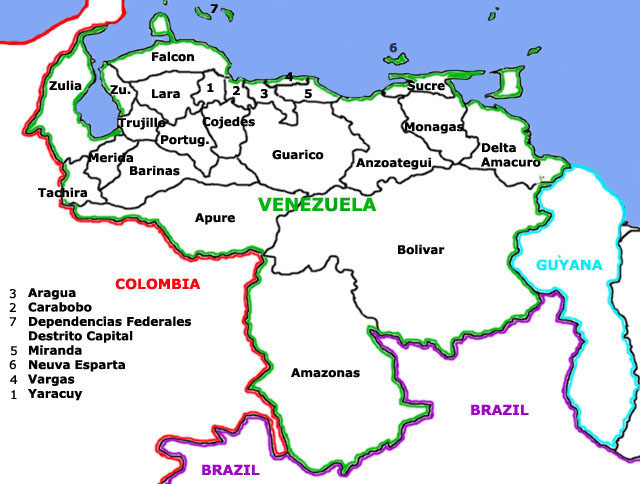Isognathus
Moths in the first row can be difficult to determine from photos only.
But look for the following:
excelsior: whitest, especially in upper 2/3 of pm area; thinner streaks and bars.
occidentalis: darkest, thickest streaks and bars.
menechus: bluish-grey cast; prominent white areas on veins in pm area.
Moths in second row are a bit easier with russet ground colouor:
scyron: no basal dash.
leachii: heaviest dark basal dash; generally heavier dark bars and dashes.
swainsonii: thinner basal dash; biggest difference between leachii and swainsonii expressed in red below.
Caricae in third row is quite distinct. I do not think rimosa papayae is present, but it is quite white.
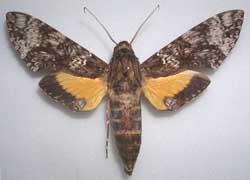
Isognathus excelsior
Extensive suffusion of whitish scales in upper two-thirds of post median, subterminal, terminal areas of
forewings, especially above arc opening toward anal angle.
Distinguished from all other species of Isognathus by pure white underside to abdomen.
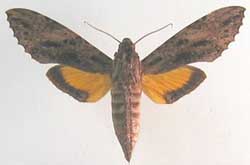
Isognathus leachii
Similar to Isognathus swainsonii.
Black, basal strak 2.5 mm broad.
Crossvein m2-m3 pale, distinctly separating small dark brown cell patch from
elliptical spot distal to m2-m3.
Black streak between M3, CuA1 heavy, connected with curved patch below CuA2.
Greyish-white scaling sparse, no distinct interrupted grey vein-streaks posteriorly.
Hw: Inner edge of dark brown marginal band distinctly dentate, not constant in width.
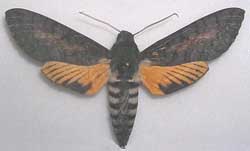
Isognathus c. caricae
Fw: two elongated orangey-brown patches connected below cell mark, smaller basal patch along i. m.;
otherwise dark grey.
Only Isognathus species with hw dark marginal band replaced by series of black
streaks along veins.
|
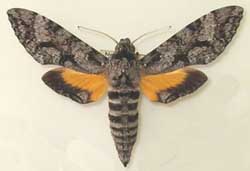
Isognathus menechus
Body, fws have bluish-grey cast.
Forewing: double antemedian, double postmedian lines, distinct at costa.
Pm pair interrupted at M3, then reappear posteriorly, quite concave,
forming semicircle opening towards anal angle. Elongate black patch between M3 and CuA1 merges basally with postmedian lines.
Distal white vein-streaks generally conspicuous.
questionable ??
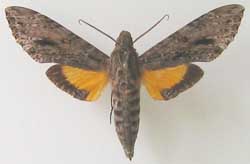
Isognathus swainsonii
Similar to Isognathus leachii.
Lighter with more white scaling.
Black, basal streak thinner in swainsonii.
Dark brown spot at apex of discal cell melded with brown spot outside crossvein m2-m3 in swainsonii.
In leachii there is clear separation of
these two dark spots with thin light space.
Hw: dark marginal band uniformly wider, less regularly dentate along veins.
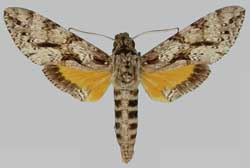
I. rimosa papayae
|

I. mossi fabiane ?

Isognathus tepuyensis
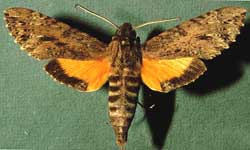
Isognathus scyron
Thorax, fws russet-drab-brown.
Outer half of fw: grey vein-streaks, interrupted by black dots.
Fw: black dash between M3, CuA1, smaller one between CuA1, CuA2, these dashes situated in pale russet area, not
clearly defined though obvious, being most distinct between M1, M3.
Female's fw lacks black dashes.
Underside of abdomen dirty white or slightly buff, faintly speckled with russet scales.
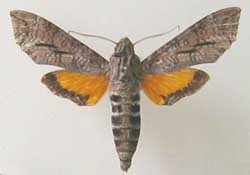
Isog. allamande
Fw: grey, with darker markings, lightly shaded with white; curved white
line running between Rs1 and M1. Black streaks running between M3 and CuA1,
and CuA1 and CuA2.
Female without black streaks.
|
|
